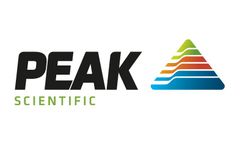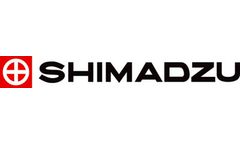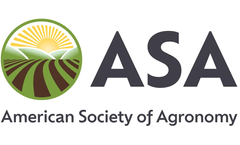Refine by
Lc Ms Articles & Analysis
22 articles found
GC-MS fatty acid profiling often starts with the transesterification of lipids into fatty acid methyl esters (FAMEs), followed by chromatographic separation. ...
Impurities can be identified and their composition and structure can be ascertained by the use of sophisticated analytical techniques such as GC-MS, LC-MS-MS, and NMR. Step 3: Determination of Analytical Reference Standards To guarantee accurate results, these analytical reference standards are employed as benchmarks throughout ...
Pheromone activity screening service is provided with advanced analytical techniques including Gas Chromatography-Mass Spectrometry (GC-MS), Liquid Chromatography-Mass Spectrometry (LC-MS), and Nuclear Magnetic Resonance (NMR) Spectroscopy to identify and isolate the components of pheromone blends. ...
This is usually performed by taking a sample of cannabis extract and analyzing its components, including cannabinoids and terpenes, via high-performance liquid chromatography (HPLC), liquid chromatography with mass spectrometry (LC-MS), gas chromatography (GC), or thin-layer chromatography (TLC). ...
Some of the instruments which can be used for terpene testing include: In addition to Peak Scientiifc's Precision series of gas geneartors for gas chromatography, the Solaris XE 35 nitrogen generator could also be used for terpene testing with LC-MS instruments. To discover Peak's full range of gas generators for LC-MS please ...
Our certified reference materials are produced and analyzed under double accreditation ISO/IEC 17025 and ISO 17034 to give you accuracy assurance. Analytical Method LC/MS/MS Analysis of Neonicotinoid Pesticides in Dandelion Blossoms on Ascentis® Express C18 after Dispersive SPE (QuEChERS) Read More ...
This analysis is usually carried out using LC-MS (Liquid Chromatography Mass Spectrometry) or GC (Gas Chromatography). LC-MS and GC require a flow of inert gas such as hydrogen or nitrogen, both of which can be easily supplied via a gas generator. ...
In this study, the performance and versatility of the AutoMate-Q40, workstation platform, was evaluated for the extraction of Melamine and Cyanuric Acid in milk based products. A Liquid Chromatography (LC) coupled to a Triple-Quadrupole Mass Spectrometer (LC-MS/MS) was employed for the detection of these adulterants. ...
Whole body tissue homogenates and soils were extracted and analyzed using LC‐MS to determine pesticide tissue and soil concentration, as well as bioconcentration factor in toads. ...
Concentrations of neonicotinoid residues were measured in the top 5 cm of soil and overlying soil surface dust before planting in 25 commercial fields with a history of neonicotinoid seed treatment use in southwestern Ontario in 2013 and 2014 using LC‐ESI(+)‐MS/MS. The mean total concentrations were 3.05 and 47.84 in 2013, and 5.59 and 71.17 ng/g ...
We measured concentrations of neonicotinoid residues in the top 5 cm of soil before planting of maize (corn) in 18 commercial fields with a history of neonicotinoid seed treatment use in southwestern Ontario in 2013 and 2014 using LC‐ESI(+)‐MS/MS. A simple calculator based on first order kinetics, incorporating crop rotation, planting date and ...
Quantification was performed via LC/MS‐MS and microbial diversity assessed via next‐generation sequencing of bacterial 16S rRNA genes. ...
In this study, the performance and versatility of the AutoMate-Q40, QuEChERS workflow solution, was evaluated for the extraction of Imidazolinone herbicides. A Liquid Chromatograph (LC) coupled to a Triple-Quadrupole Mass Spectrometer (LC-MS/MS) was employed for the detection of these herbicides in agricultural commodities. ...
We applied imidacloprid or clothianidin to turf with white clover, followed by irrigation, and used LC‐MS/ MS to analyze residues in clover blooms that were directly sprayed during application or that formed after the first mowing. ...
Abstract QuEChERS is a Quick-Easy-Cheap-Effective-Rugged-Safe extraction method that has been developed for the determination of pesticide residues in agricultural commodities. While the original unbuffered method was developed for plant matrices, since 2003, two additional buffered methods were created and adapted to many additional matrices such as vegetables. The rise in popularity of the ...
The analyses typically involve use of multi-residue methods (both GC-MS and LC-MS) to test for over 500 pesticide residues. Due to its ease of use and proven robustness, the QuEChERS extraction has become the method of choice for pesticides multi-residue analyses in a wide range of matrices. This study used laboratory spiked samples and samples ...
In 2008 at EPRW in Berlin the “Quick Method for Analysis of Residues of numerous Highly Polar Pesticides in Food of Plant Origin involving Simultaneous Extraction with Methanol and LC-MS/MS Determination” (QuPPe Method) was presented. The aim of this project is to evaluate the performance and versatility of the AutoMate-Q40 for the ...
An isotope dilution liquid chromatography tandem mass spectrometry (LC‐MS/MS) method was employed for quantitation of parent chemical concentrations. ...
Food safety is ensured by testing for the presence of mycotoxins by methods such as LC-MS-MS. In addition to mycotoxins, many other known and unknown chemicals threaten the food supply, however their presence might be missed by LC-MS-MS methods which rely exclusively on MRM settings for ...
Estrogen concentrations were screened using enzyme-linked immunosorbent assay (ELISA), followed by quantification using liquid chromatography with tandem mass spectrometry (LC/MS/MS). Concentrations of estrogens from ELISA were much higher than the LC/MS/MS values, indicating cross-reactivity ...










